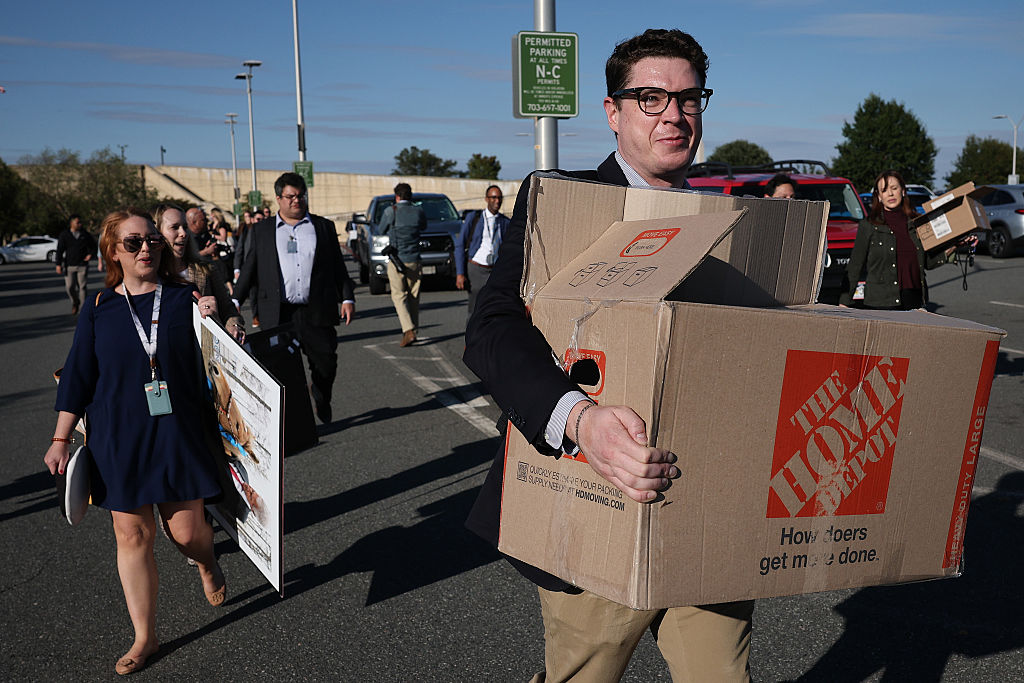The Defense Department has announced a “new media” press corps largely comprised of conservative news outlets after restrictions introduced for journalists covering the agency led many to walk out rather than agree to the agency’s demands.
[time-brightcove not-tgx=”true”]
Pentagon spokesperson Sean Parnell announced on X on Wednesday that “over 60 journalists, representing a broad spectrum of new media outlets and independent journalists, have signed the Pentagon’s media access policy and will be joining the new Pentagon press corps.” Twenty-six of those journalists already had access to the Pentagon and previously signed its press policy, he noted.
The policy, which imposes new limitations on journalists’ access and bars them from soliciting information from the agency that has not been authorized for release, even if it is unclassified, raised warnings from media organizations and the majority of the Pentagon reporters refused to sign it.
Parnell confirmed that all of the journalists in the newly announced “next generation” of the Pentagon press corps have agreed to the policy.
The streaming service Lindell TV, started by President Donald Trump ally Mike Lindell, confirmed its participation on X, as did the Gateway Pundit, the Post Millennial, Human Events, Turning Point USA’s media brand Frontlines, and Just the News.
Right-wing political commentator Tim Pool’s podcast Timcast; Washington Reporter, a newsletter on Substack; and the National Pulse also confirmed to the Washington Post that they signed the policy.
Parnell said a number of “independent journalists” also signed on, but their identities have not been disclosed.
The Pentagon did not immediately respond to TIME’s request for further details on the signatories.
“New media outlets and independent journalists have created the formula to circumvent the lies of the mainstream media and get real news directly to the American people” Parnell wrote. “Their reach and impact collectively are far more effective and balanced than the self-righteous media who chose to self-deport from the Pentagon.”
A number of journalists walked out on the agency after it rolled out its new requirements for Pentagon reporters. The Administration called the restrictions “common sense” and said they were there to regulate a “very disruptive” press, but they raised alarm from media organizations. The Pentagon Press Association, which represents journalists covering the department, asserted they “appear designed to stifle a free press and potentially expose us to prosecution for simply doing our jobs.” After handing in their badges, dozens of journalists packed up boxes and left the Pentagon at 4 p.m. last Wednesday, the deadline set by Defense Secretary Pete Hegseth to leave the building.
Only 15 people had signed the policy the day after the walk out. Conservative outlets OAN, the Federalist and the Epoch Times were included on that list, along with foreign outlets and independent journalists.
Trump has supported the new media policy, saying that “the press is very dishonest.”
Months before the policy was introduced, the Trump Administration asked outlets such as CNN, the Post, and the Hill to leave their spaces in the Pentagon in February, while more conservative outlets such as the Washington Examiner and the Daily Caller moved in.
The White House has made other moves to steer coverage of the Administration away from traditional media outlets, offering briefings for influencers and non-traditional media and including a new media seat in the briefing room for that has been occupied by influencers, YouTubers, and newer yet mainstream outlets like Semafor and Axios.
“Americans have largely abandoned digesting their news through the lens of activists who masquerade as journalists in the mainstream media. We look forward to beginning a fresh relationship with members of the new Pentagon press corps,” Parnell’s announcement concluded.

